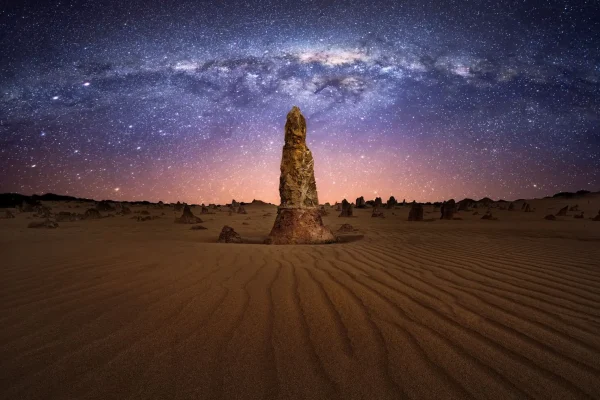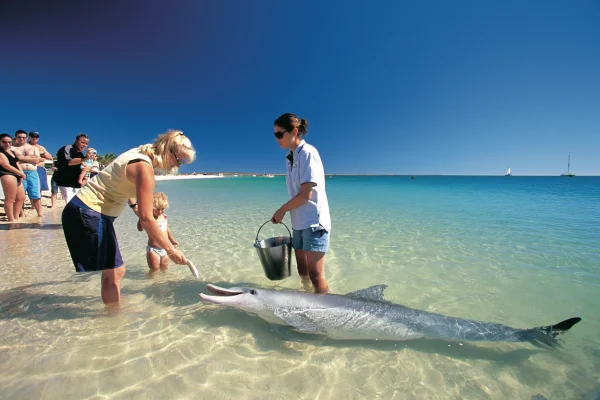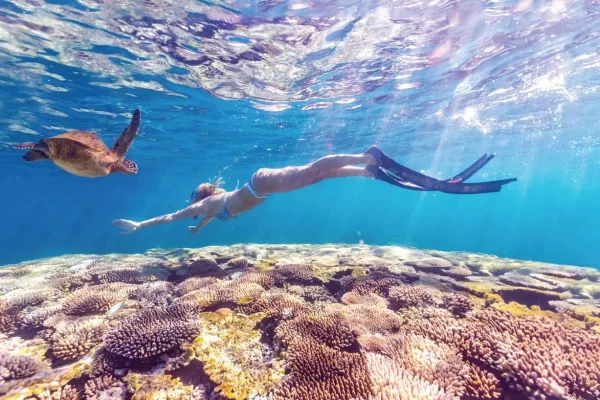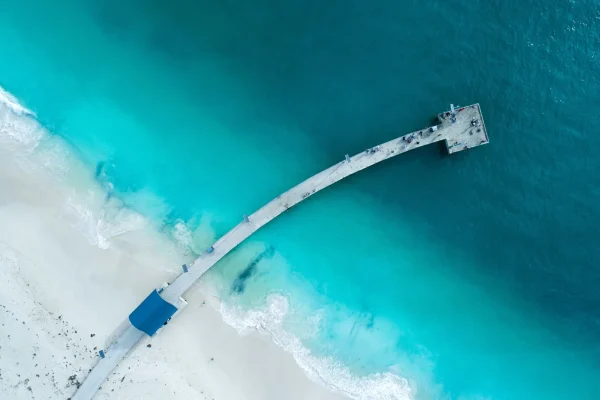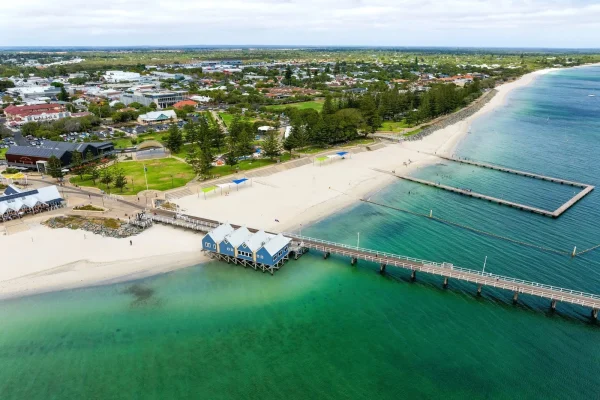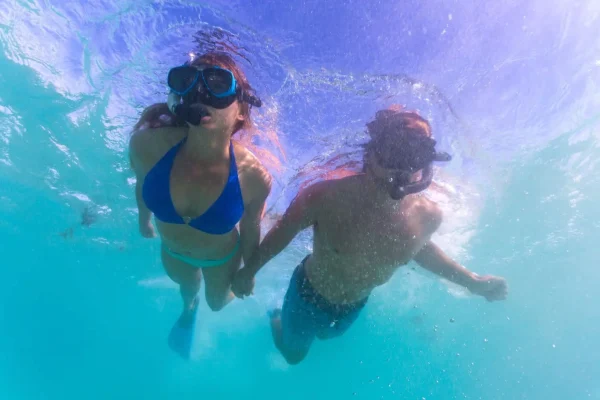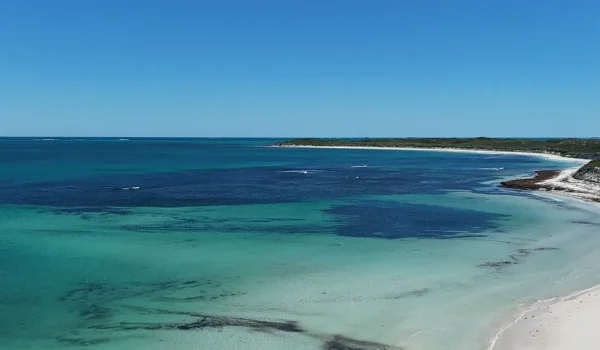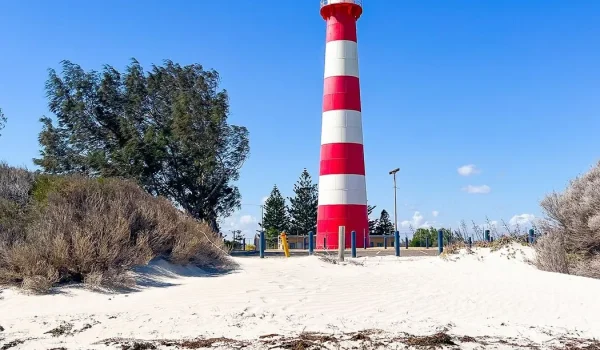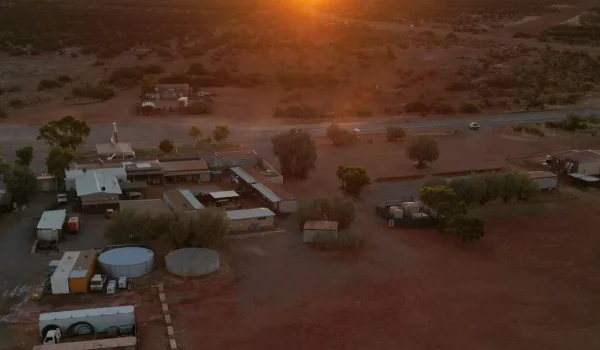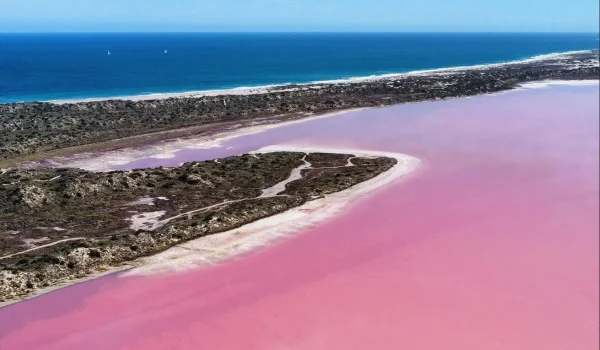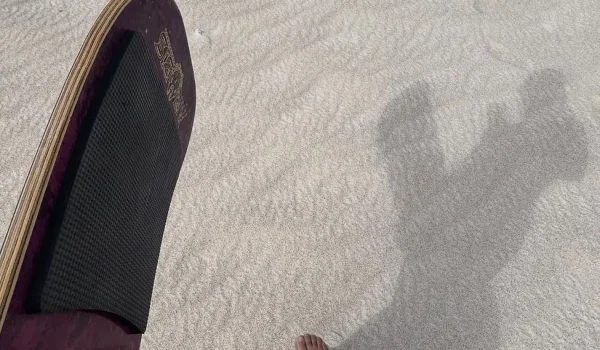Shell Beach in Shark Bay, Western Australia, is one of those places that makes you slam on the handbrake and just stand there in wonder. Along Coral Coast Road on the Coral Coast, this stretch looks like a snowfield at first glance — but instead of beach sand, the shore is made entirely of tiny white shells. My name’s Paul Beames, and as someone who’s guided travellers across WA’s West Coast and the Northern Territory, I can tell you Shell Beach is like nowhere else.
What Makes This Beach a Scientific Wonder
Forget white sand beaches — here you’re walking on billions of cockle species Fragum erugatum. The water’s high salinity level (nearly as salty as the Dead Sea in some places) means fish and predators can’t live here, so the cockles breed like crazy and pile up over thousands of years.
In some spots, the cockle shells are ten metres deep. These shells eventually compress into a soft limestone called coquina, which was once quarried for local buildings like the Old Pearler Restaurant in Denham. You’re literally standing on a geological storybook, with connections to ancient climates, modern ecology, and even building history.
Shell Beach is also part of the Shark Bay World Heritage Area, recognised for its natural science value and cultural study significance to Aboriginal peoples and First Nations custodians. The stromatolites at Hamelin Pool — often called “living fossils” — are part of the same system, linking Shell Beach to a bigger scientific story that goes back billions of years.
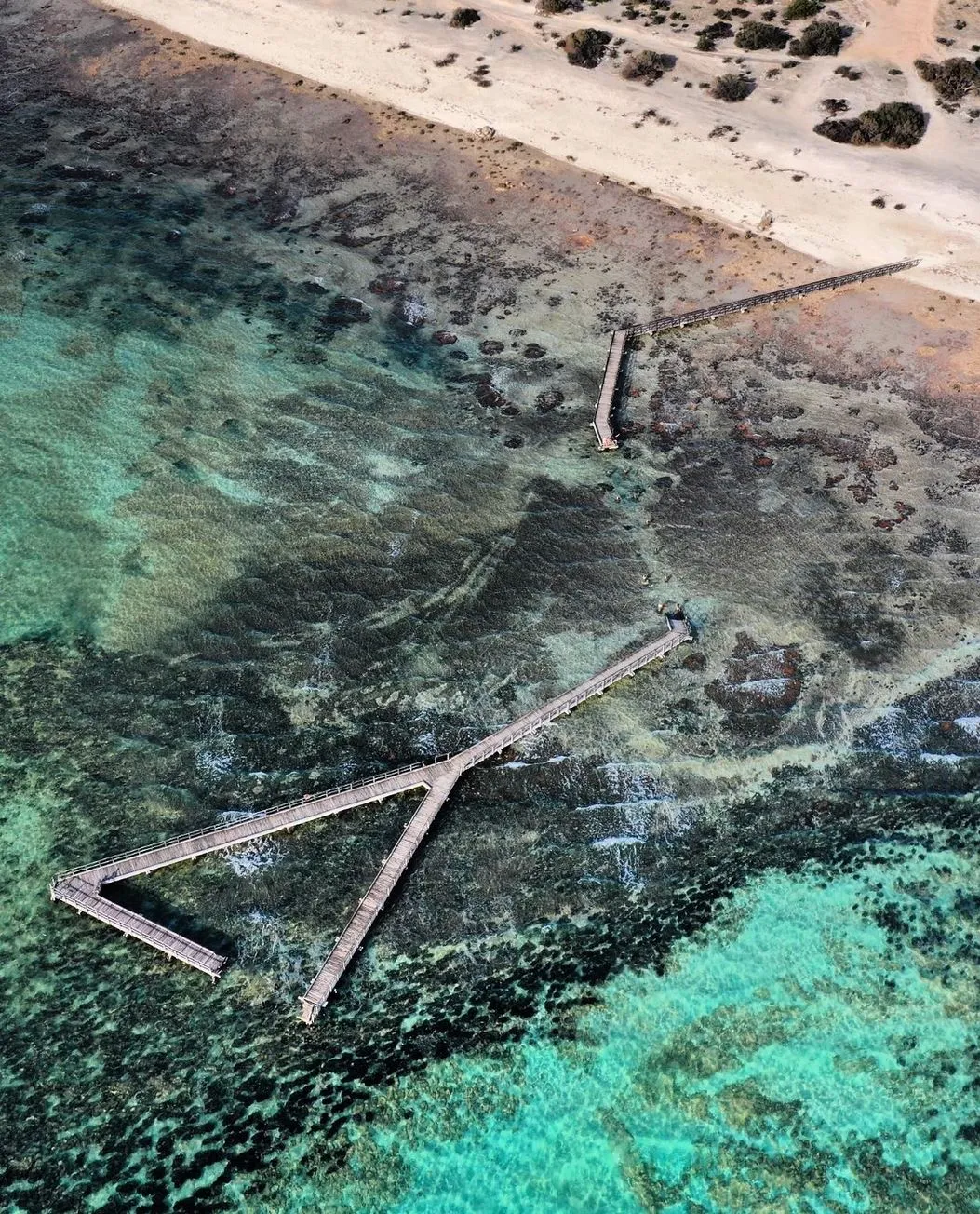

The Story Behind the Beach’s Unique Name
Not just a name. This 70km stretch of coast is made entirely of shells, not sand, one of the few places in the world where “Shell Beach” is a literal description. Early sailors noted the strange shoreline, covered in cockle shells instead of sand, and the name stuck.
Over time, the name has also become part of Shark Bay’s branding — like Monkey Mia, Francois Peron National Park, or Eagle Bluff lookout. Together, these sites anchor the World Heritage Drive, a loop of ecological and cultural wonders you won’t find anywhere else.
How to Get There
Shell Beach is 45 minutes from Denham and is right on Shark Bay Road. It’s easy to get to as part of a Coral Coast drive — whether you’re driving the Great South West Edge, cutting north from Geraldton or linking Coral Bay and Ningaloo further up the track.
- From Perth: 8.5-9 hours (850km)
- From Geraldton: 4 hours (400km)
- From Carnarvon: 3.5 hours (350km)
The road is fully sealed, so even camper trailers, caravans or small hire cars can get in without issue. Sun protection recommended: the white shells reflect light fiercely, and you’ll burn faster than you think without a hat and sunscreen.
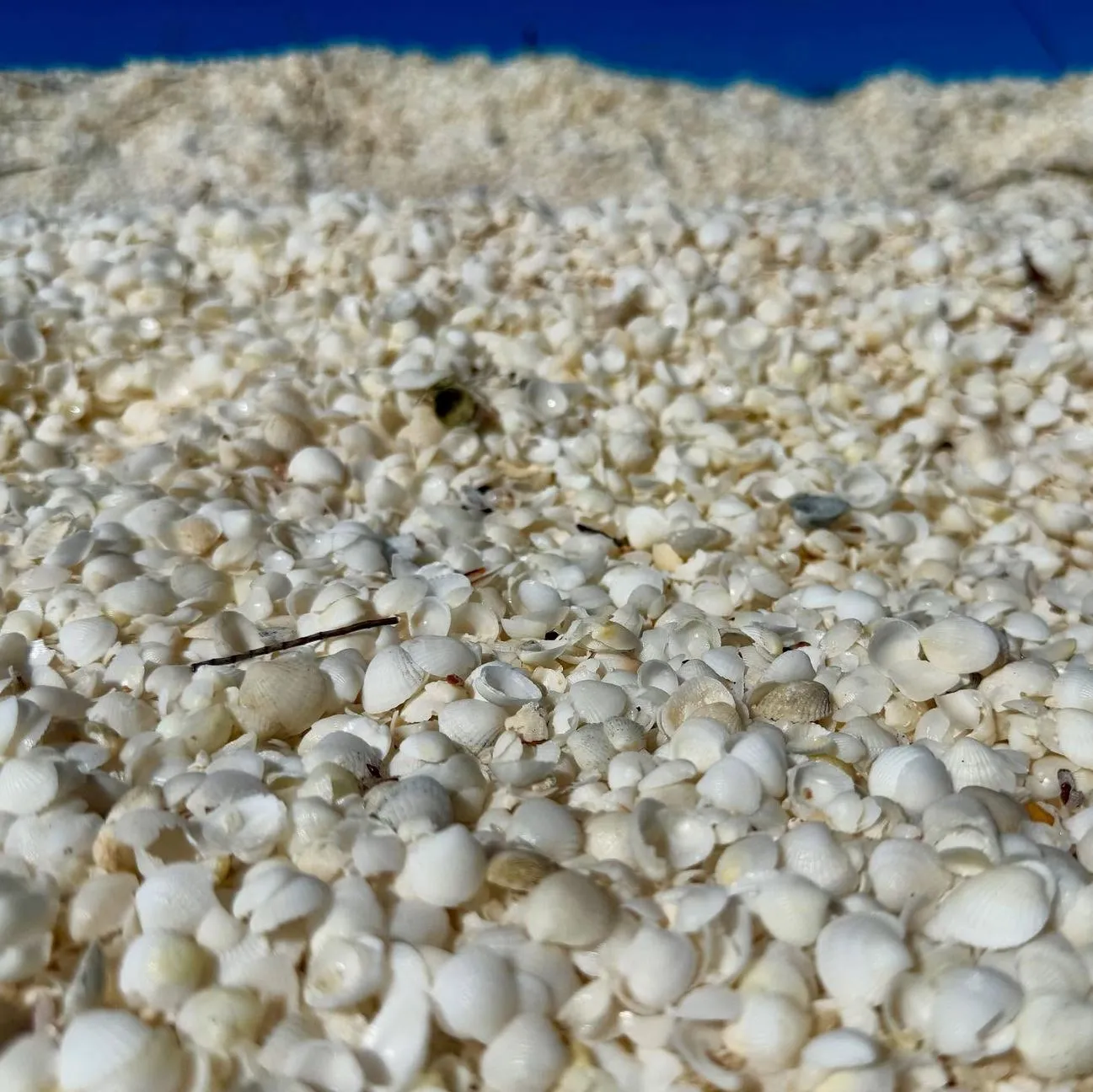
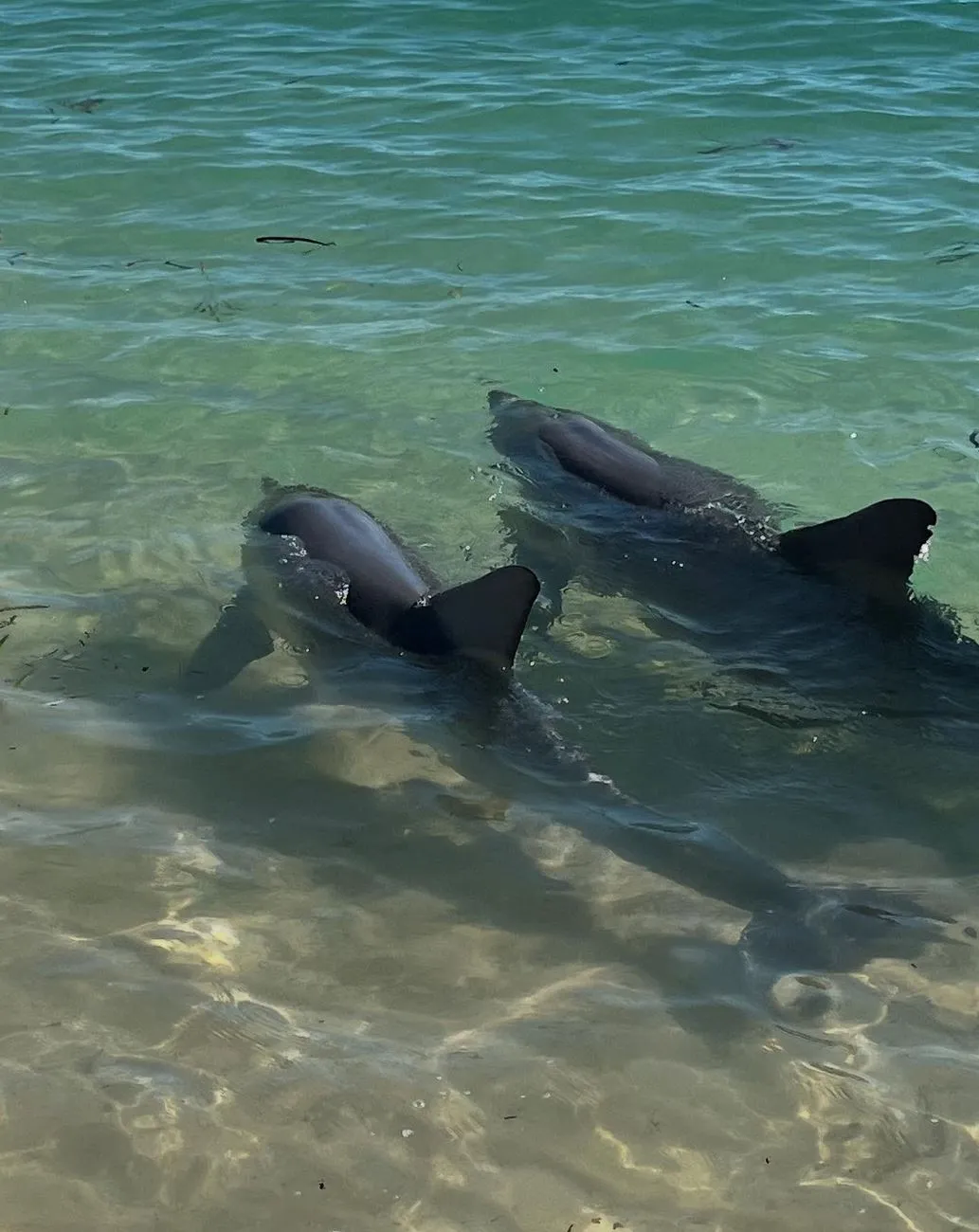
Unique Coastal Activities for Every Traveller
Don’t be fooled by the simplicity. There’s more here than just beachcombing for photo opportunities.
- Swimming: The salinity makes you float like a cork. It’s calm, safe and a great change from surf-pounded beaches.
- Rock pools and shoreline walks: Low tide reveals shallow rock pools that sparkle in the sun.
- Photo essay moments: The contrast of white shells, turquoise blue water and red earth cliffs makes this a dream backdrop for budding photographers or even a “Places We Swim” style photo essay.
- Cultural connections: Respect the role of Aboriginal peoples and First Nations communities who have used Shark Bay for food, ceremony and storytelling for thousands of years.
Or as part of a 4 Day Monkey Mia Tour from Perth, which includes Shell Beach, Monkey Mia’s dolphins, Hamelin Pool’s stromatolites and the red dunes of Francois Peron National Park. No need to plan every kilometre yourself.
Where to Pitch a Tent Near the Coastline
Shell Beach itself has no camp sites — being part of a World Heritage Area — but you’ve got plenty of nearby options:
- Hamelin Pool Caravan Park: General access, close to Hamelin Pool Stromatolites.
- Denham Holiday Parks: Family-friendly with powered sites, dunnies and BBQs.
- Francois Peron National Park: For 4WDs, remote photographic campgrounds with seasonal fire restrictions.
- Monkey Mia: Resorts and campgrounds with access to dolphin encounters.
Further south, if you’re linking Shell Beach with Dhilba Guuranda-Innes National Park in South Australia (yep, another Innes), you’ll find places like Browns Beach Campground, Pondalowie Caravan and Trailers Campground and Shepherd’s Hutt. Different state but same road trip vibe: rugged coastlines, camp trailers and Fishing Beach feeds by the fire.
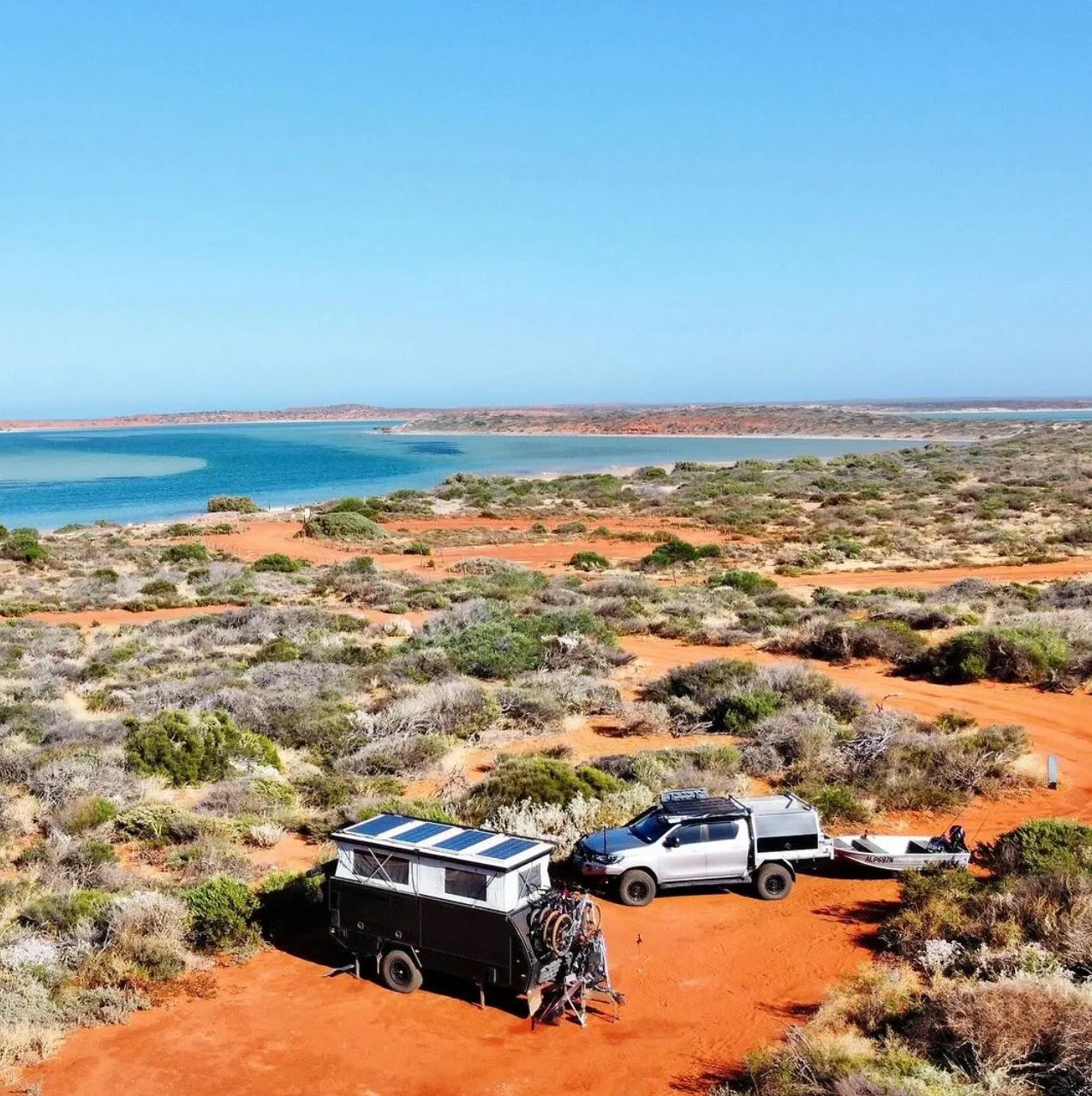
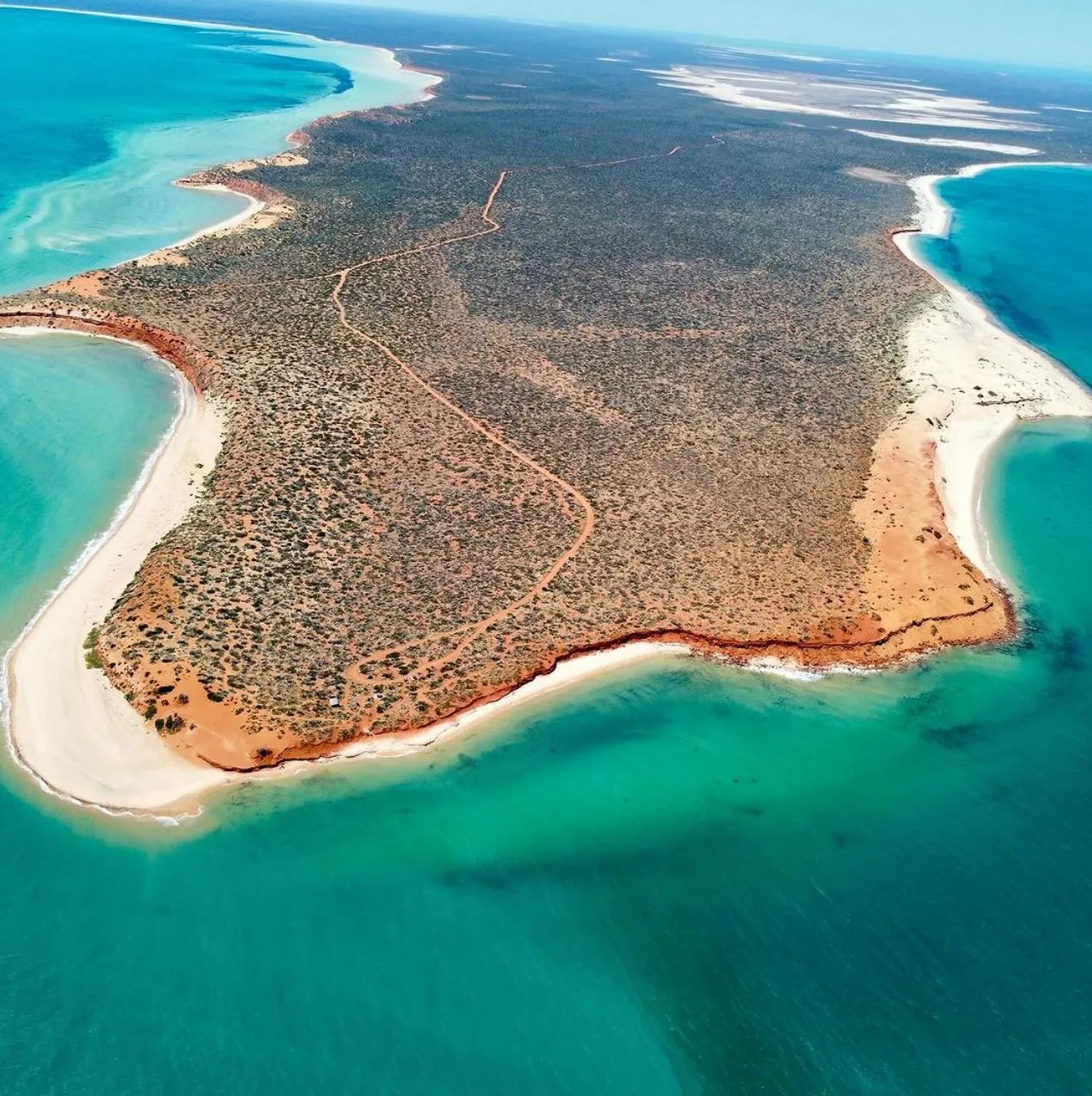
Road Trip to the White-Shelled Coast
For most people, Shell Beach is part of a bigger loop. Whether you’re doing the Great South West Edge, the West Coast drive or pushing north to Coral Bay and Exmouth, the beach is on the itinerary.
Road Trip Checklist
- Fuel stops: Billabong Roadhouse is a key one on World Heritage Drive.
- Maps: Offline mode recommended — browser windows don’t load out here.
- Camping gear: Swags, camper trailers or vans — all good, just follow park entry rules and seasonal fire restrictions.
- Safety: Surf Life Saving Australia don’t patrol here — so swim smart.
- Sun protection: Absolutely critical.
Best Time to Visit
The Coral Coast has two clear travel moods:
- Dry season (May–Sept): Nice days, cool nights, perfect for camper trailers and long road trips.
- Hot season (Oct–April): 40°C, mozzies and glare so bright you’ll squint even in light mode or small font size on your phone. Seasonal fire restrictions also apply.
Shoulder seasons can be good for fewer crowds. Remember WA distances are huge — always check minimum fares if flying into Learmonth or Monkey Mia and budget extra days for detours.
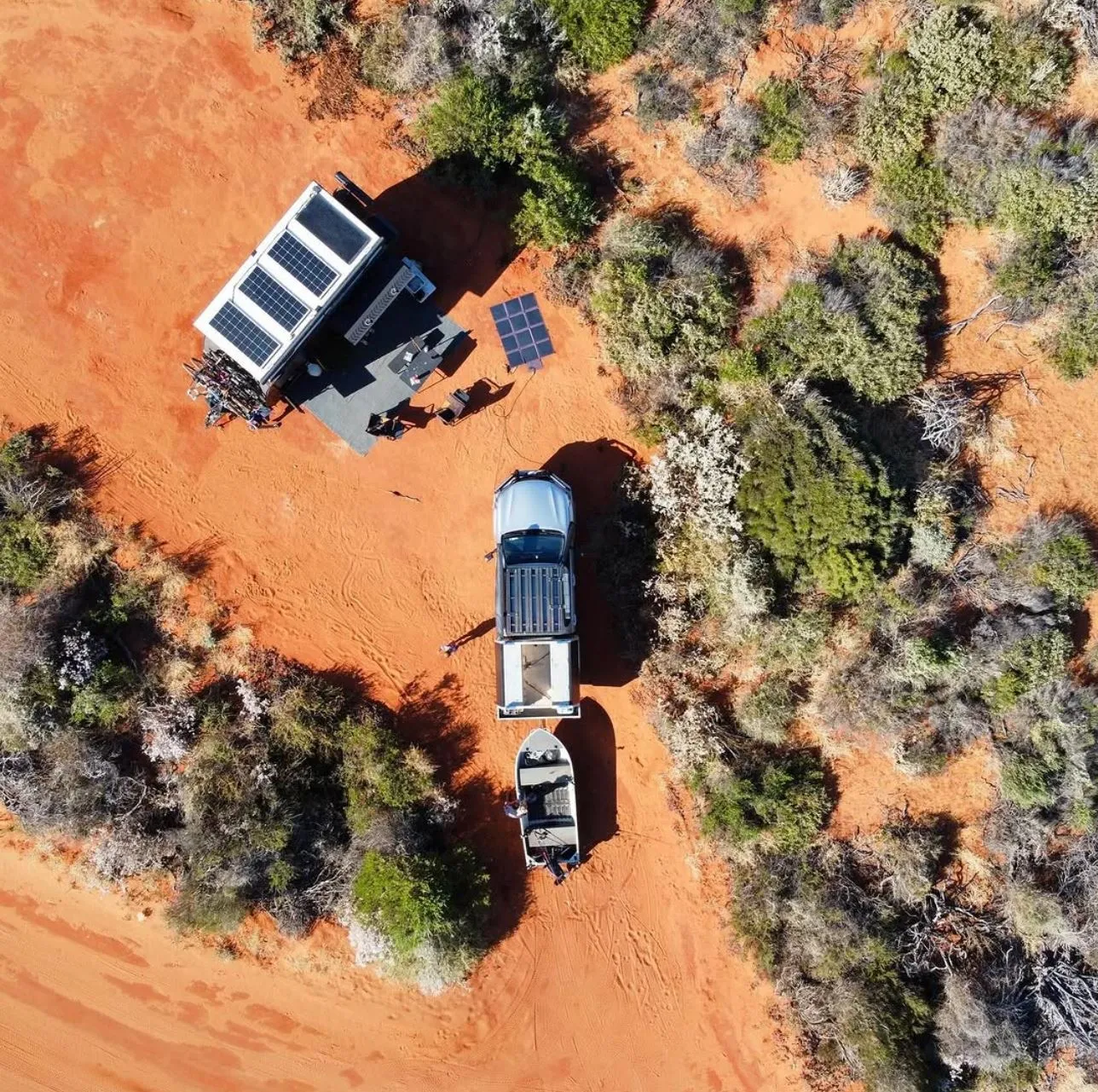
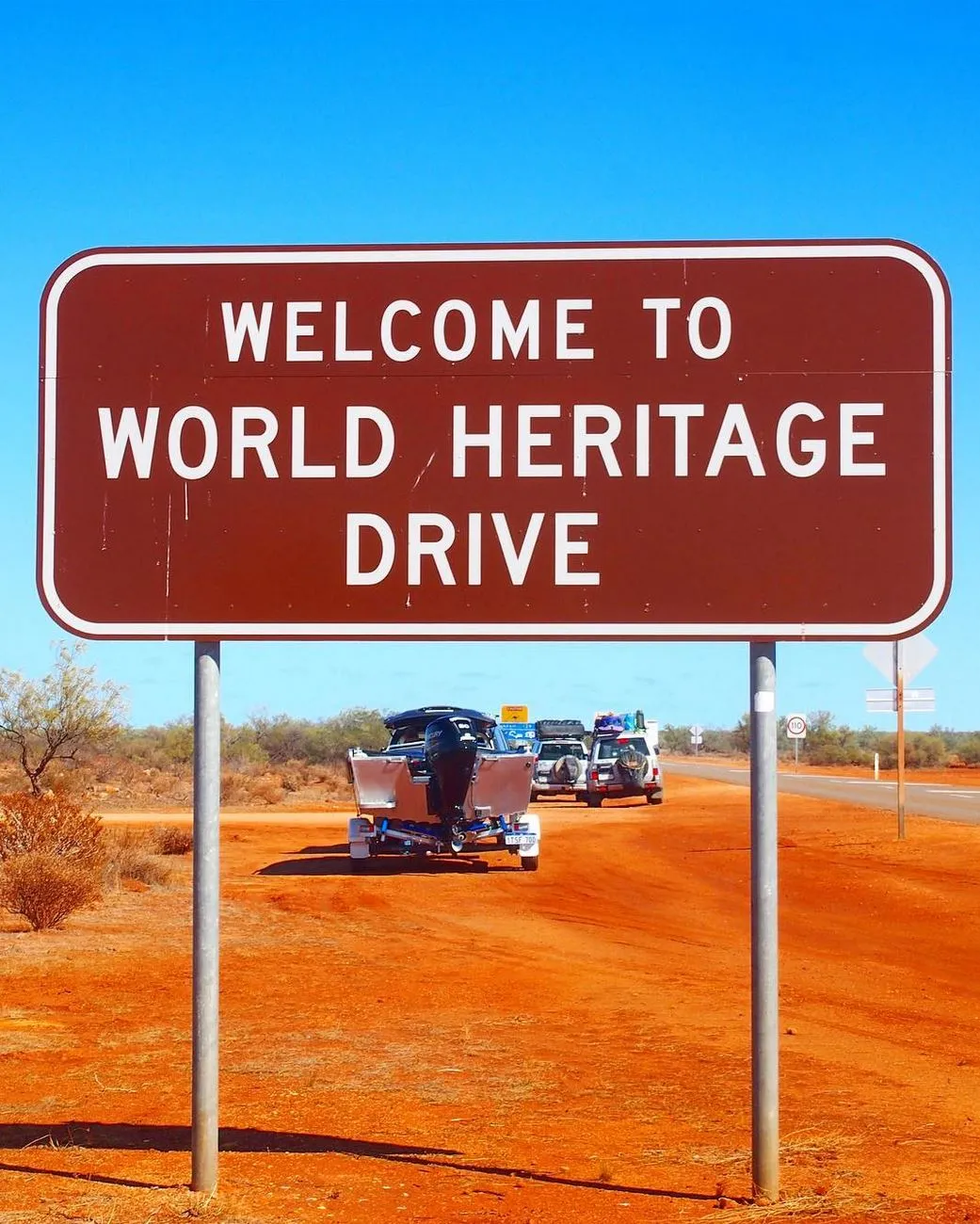
Author’s Personal Story
Pulling into Shell Beach after a long day on Shark Bay Road, I thought my eyes were playing tricks on me. It looked like snow against the turquoise water. I crouched down, scooped up a handful and let the cockle shells run through my fingers.
That night, after camping in Denham Holiday Parks and dinner at the Old Pearler Restaurant (yes, the walls really are made of coquina shells), I realised this place was more than a photo stop. It’s the crunch of shells underfoot, the silence of Shark Bay at dusk and the reminder that nature doesn’t need white sand beaches to blow your socks off.
FAQ
Is Shell Beach part of the Shark Bay World Heritage Area?
Yes — it’s one of the key sites recognised globally for its ecology, geology and cultural value.
Can I collect shells at Shell Beach?
No. To protect the environment, the removal of shells is not allowed.
Are there any facilities on site?
Car park, toilets and general access paths, but no campgrounds or cafes. Bring water and shade.
How does Shell Beach compare to white sand beaches?
Same colour but completely different underfoot. Instead of sand, you’ll feel coquina shells crunching.
Is Shell Beach safe for swimming?
Yes, but unpatrolled. High salinity so you float easily — like the Dead Sea — but always stay within your comfort level.

